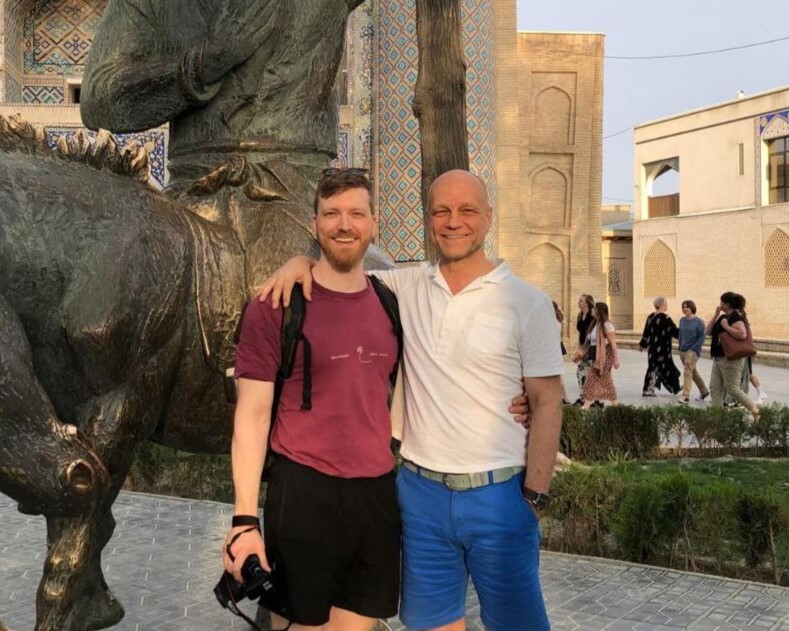As a psychologist and coach, I work with people on their behaviour and the attitudes behind it to help them improve their quality of life and achieve their goals. Although each individual's journey is unique, there are three key aspects that my work focuses on. In this article, we will look at them in more detail.

1. Expanding Behavioral Repertoire
When someone broadens their range of behaviors, they increase the number of behaviours and models from which they can select the most suitable in comparable situations. This increases their chances of being successful.
Let’s think about how a person reacts when they disagree with their interlocutor, especially if the topic of conversation is important to one or both parties, for example:
- Raising children;
- Deciding whether to fire a talented employee who consistently breaks company rules.
In such situations, a person can behave as follows:
A. They argue with their interlocutor and try to convince him of the correctness of their opinion or of the wrongness of the interlocutor's opinion. In doing so, they may become louder or use a harsher choice of words.
B. They adapt and adopt the other person’s opinion, even if they disagree completely. In this way, they try to end the unpleasant situation that they feel has arisen or is about to arise as a result of the difference of opinion or dispute.
C. They look for a compromise and try to find the golden mean that satisfies both sides. To do this, they listen and ask questions in order to understand their interlocutor as he would like to be understood. At the same time, they explain their own opinion clearly so that their interlocutor understands them correctly. Only in this way is it possible to mutually understand one another and find points of contact between the different opinions that make a compromise possible.
Expanding one’s behavioral repertoire simply offers more choices in such situations and helps to find an optimal solution.
2. Increasing Communicative Flexibility
The broader a person’s behavioral repertoire is, the more important is their ability to switch between different behaviors or behavioral patterns, depending on the situation, the topic of conversation and its importance, as well as the person they are talking to and their position or status. For example, a parent can switch from the role of the ‘permissive, loving father’ to the ‘strict father’ and vice versa if necessary.
A person's ability to vary their behavior and communication style improves their communication and thus their relationships with other people, which in many cases is crucial for success – both professionally and personally. In this context, I recommend the article: How to Engage Constructively in Dialogue and Build Relationships Easily.
3. Increasing Awareness
Awareness in communication means clearly seeing yourself, others and the situation in which you find yourself with others. It also means understanding the interactions between the participants in the given situation and their possible effects. Awareness helps a person to adopt a ‘meta-position’ or a position ‘from the side’ (outside the given situation). Aware people can more easily assess how their behavior influences the situation, what consequences it may have and whether they are satisfied with it.
Thus, a higher level of awareness makes it possible to recognise when it is time to change one's behavior, which behaviors or communication style should be used or excluded in a given situation and how to remain constructive in all of this.
It is important to keep an eye on the different levels on which all communication takes place. I recommend the article on this: Levels of communication: Levels of Communication: How to Communicate Effectively?
Case Study
Let's take a look at a concrete example of how increasing communicative flexibility and raising awareness works.
When my son was 3 years old, I enrolled him in a swimming course for children. During the 10 hours of this course, Moritz didn't make much progress. However, he had overcome his fear of the water during this time.
So I enrolled my son on the follow-up course, another 10 hours. As a result, Moritz performed unexpectedly well and met several standards! He had also discovered his love of the water, swimming, diving and high diving (!). Representatives of the local swimming club showed their interest and offered us the opportunity to include Moritz in the children's section of the club. My son and I were really proud of this unexpected turn of events and gladly accepted the offer. Thus began Moritz's career as a swimmer, which we both embarked on with great motivation.
As an ‘engaged’ parent, I took an active part in my young son's training process, gave advice on how he could swim better and even criticised him from time to time. In fact, I acted as a ‘critical parent’...
Then the trainer approached me:
‘Mr Hauer, your son has just started swimming. Please, think back to your childhood! Did you learn everything at once and master everything after the first attempt – maths, cycling, swimming? You're behaving like an impatient assistant coach, which I didn't ask you to do. I understand that you want to support your son. Then, please, praise him as often as you can, even for the smallest successes! That's crucial at the beginning.’
This serious and clear message had hit home. I had understood and also remembered my own childhood... That's why I changed my behaviour. I deliberately started to see Moritz's every little success and then emphasise and praise him accordingly. I also started to ask my son what he himself thought about swimming and his progress.
I realised one thing: I could have stuck to my old communication style and, as a ‘strict parent’, mainly criticised my young son and set the bar too high for him. But what would that have led to? In all likelihood, Moritz would have felt overwhelmed and insecure and would have lost the joy of swimming.
The feedback from the trainer helped me to ‘wake up’ and consciously change my behavior. I realised that I, actually, knew what to do and how to do it, but had simply not applied this knowledge – not a pleasant self-awareness!
Of course, every now and then, there were moments when I almost behaved like I did at the beginning, but I managed to close my mouth in time (breathe out deeply - breathe in slowly - breathe out deeply again...!).
It helped that I consciously thought about what my critical words would lead to... So I consciously switched on my alternative behavioral model.
Over time, this new behavior became my habit.
12 years later, my son Moritz came 2nd in his age group (15-16 yrs) at the German Swimming Championships in Berlin (50 m freestyle). That was great!

Conclusion
In summary, the three key aspects of working on behavior and the attitudes behind it (expanding behavioral repertoire, increasing communicative flexibility, raising awareness) are naturally connected. Progress in each of them makes it easier for us to improve our communication skills, strengthen our relationships with others and increase our general well-being.
At the end of this article, and especially after the case study described, I recommend reading the article: The Art of Communication: How to Truly Understand Others.